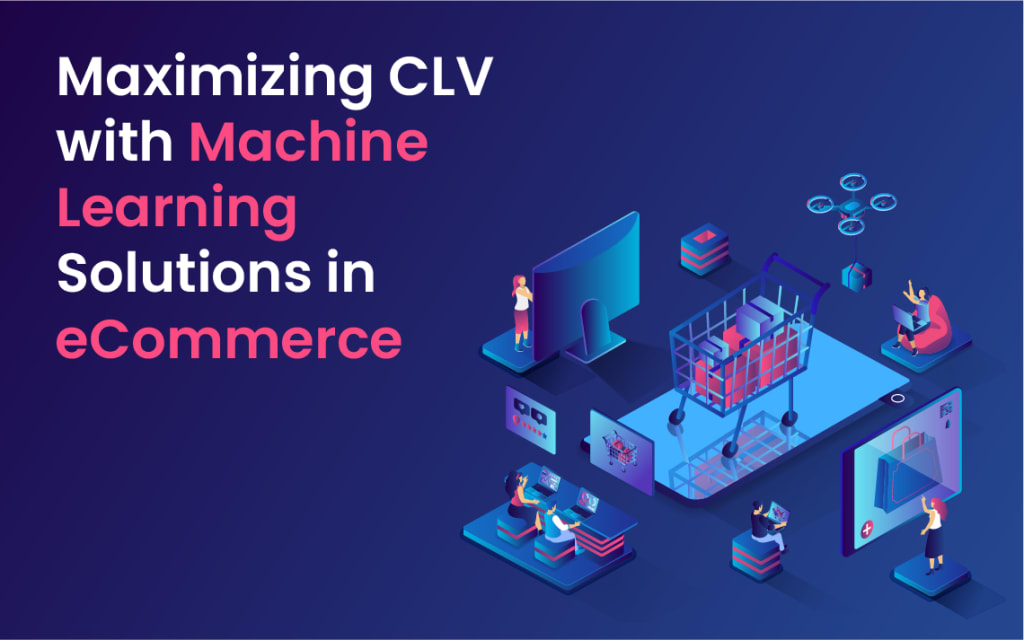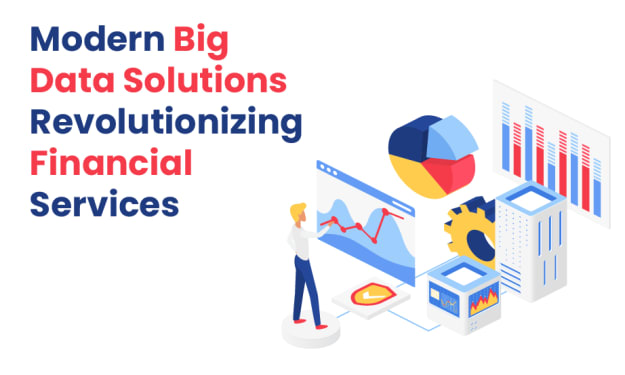Maximizing CLV With Machine Learning Solutions in eCommerce
Discover how Machine Learning Solutions can help eCommerce business maximize customer lifetime value, drive revenue growth and enhance customer loyalty.

In the highly competitive world of eCommerce development, maximizing Customer Lifetime Value (CLV) is critical for businesses to remain profitable and sustainable. CLV is an acronym for customer lifetime value, or the total amount of money a client is anticipated to spend with a company.
It is an important metric for businesses with a subscription-based model or recurring revenue streams, as it helps determine each customer's lifetime value and guides the allocation of marketing resources.
One of the most effective ways to maximize CLV is by using Machine Learning (ML) algorithms. ML enables eCommerce businesses to analyze customer behavior, preferences, and patterns and use this information to deliver personalized experiences that increase customer satisfaction, loyalty, and retention.
Businesses can optimize operations, improve customer engagement, and drive revenue growth by leveraging data insights and ML-powered analytics. In this article, we will explore how the future of eCommerce can see Machine Learning for maximizing customer lifetime value.
We will discuss how ML can help predict customer lifetime value, personalize product recommendations, identify at-risk customers, improve customer service, and optimize pricing. We will also provide detailed examples of how businesses can implement these strategies to improve customer retention and revenue growth.
By the end of this article, you will clearly understand how Machine Learning solutions can help your eCommerce business achieve a competitive edge and maximize customer lifetime value.
1. Predicting Customer Lifetime Value
Machine Learning can help eCommerce businesses predict customer lifetime value based on past behavior and patterns. By analyzing customer data, such as purchase history, frequency of purchases, and customer demographics, ML algorithms can accurately predict a customer's potential lifetime value. This insight enables businesses to focus their marketing efforts on customers with the highest potential lifetime value.
Suppose you are an eCommerce business then you may make more realistic plans for the future by predicting consumer revenues and behavior. For instance, if you know that each customer spends Rs. 1000 with your company per year and you want to boost sales by Rs. 100000 this year, you will need to bring in about 100 new clients to reach your target.
2. Personalizing Product Recommendations
eCommerce businesses can personalize product recommendations based on customer behavior and preferences provided by ML-driven systems. ML algorithms can offer customers related or relevant items they could buy by analyzing customer search history, purchase history, and product ratings. Customized recommendations are more likely to convert into sales, increasing revenue and CLV.
For example, eCommerce businesses such as Amazon, Flipkart, and Myntra showcase different sections such as - You Might Also Like; More Items to Consider; and Buy Again. This approach can significantly improve the chances of converting recommendations into sales and increase customer retention.
3. Identifying At-Risk Customers
Customer behavior is difficult to predict to the untrained eye. They are after all only people with unpredictable whims and ambitions. However, trends and patterns are becoming increasingly obvious to a machine that can calculate thousands of things per second.
Businesses want to interact with customers in a way that encourages frequent store visits and subsequent sales. It might be difficult to distinguish between clients likely to buy again and those no longer interested in the products or services offered. When a customer visits the store frequently, it is said that they are churning. In contrast, a churned customer stops making repeat purchases. Client churn risk is the likelihood that a customer will stop doing business with you.
The future of eCommerce businesses can get a high boost as Machine Learning algorithms identify at-risk customers likely to churn or stop using the service. By analyzing customer behavior, such as decreased purchase frequency, decreased time spent on the website, or an increase in customer complaints, ML algorithms can identify at-risk customers. This insight enables businesses to engage with at-risk customers proactively and offer personalized incentives to retain them.
4. Improving Customer Service
Machine Learning solutions and systems can help eCommerce businesses improve customer service by providing real-time customer support. ML algorithms can analyze customer interactions, such as chat logs or emails, and provide personalized responses to customer inquiries. This enables businesses to provide faster, more accurate customer service, increasing customer satisfaction and retention.
5. Optimizing Pricing
Machine Learning can help grow eCommerce businesses like yours to optimize pricing based on customer behavior and preferences. By analyzing data such as purchase history, product ratings, and customer demographics, ML algorithms can identify pricing patterns likely to drive sales. This insight enables businesses to optimize pricing strategies to maximize revenue and CLV.
In conclusion, Machine Learning solutions offer powerful tools for eCommerce businesses to maximize customer lifetime value. Businesses can improve customer retention and increase revenue by predicting customer lifetime value, personalizing product recommendations, identifying at-risk customers, improving customer service, and optimizing pricing. As eCommerce development continues to expand, businesses that leverage the power of Machine Learning will have a significant competitive advantage over others in the market.
About the Creator
Dipen Patel
Dipen is an expert when it comes to Software Development & Programming in Full-stack and open-source environment. He has been working as the Chief Technology Officer at Quixom, providing a wide range of IT solutions.
Enjoyed the story? Support the Creator.
Subscribe for free to receive all their stories in your feed. You could also pledge your support or give them a one-off tip, letting them know you appreciate their work.






Comments
There are no comments for this story
Be the first to respond and start the conversation.